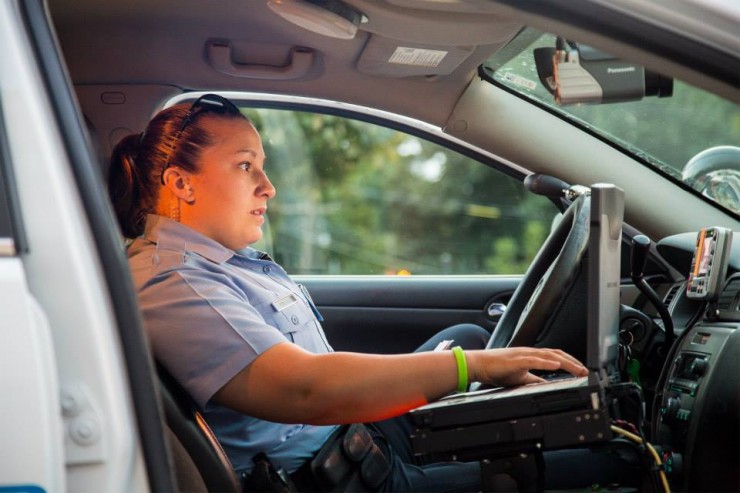7 Tips for Working Safer in your Cruiser
By: Scott Hughes 
Reprinted from Calibre Press
Being inside a marked police car is often compared to a fish bowl: we're behind glass in the public eye. This visibility makes police officers in their patrol vehicles easy targets for those wishing to cause us harm. 2014 was another tragic year for American law enforcement, with 118 officers killed in the line of duty and many more injured. Some of these attacks were launched on unsuspecting officers who were simply sitting in their police cars completing routine tasks, like report writing, eating lunch, or waiting for red traffic lights to turn green. This was brought home for us recently with the horrific murders of NYPD officers Wenjian Liu and Rafael Ramos in their patrol vehicle in Brooklyn.
Yet more than ever before we're forced to sit in our patrol cars. Since most modern police cars are equipped with MDC's, which are necessary (and often required) to do our jobs, we find ourselves frequently staring at screens, and paying attention to these computers can make us susceptible to attacks.
With that in mind here are seven simple actions you can take to make yourself safer in your patrol car.
1) Don't get boxed in. When you are stopped in traffic make an effort to keep distance between you and the other cars. This extra distance and open space could be vital in the event you're attacked and need to remove yourself quickly.
|
~~~~~~~~~ A Message From Our Sponsor ~~~~~~~~~
Earn your Bachelor of Science (BS) in Criminal Justice or Master of Science (MS) in Criminal Justice from the online college that awards more credit for police, military, and other law enforcement training than other schools. These programs are 100% online, so you can earn a criminal justice degree while you earn a living. Choose from a variety of concentrations, such as: administration of criminal justice; homeland security; homeland security and emergency management; and law enforcement and public safety. Transfer up to 116 credits toward your Bachelor of Science in Criminal Justice, or up to 15 credits toward your Master of Science in Criminal Justice. Regionally accredited and nonprofit. Get your free program guide.
learn more >
~~~~~~~~~~~~~~~~~~~~~~~~~~~~~
|
|
 Fitness Tip Fitness Tip
Officers often have tight hips and limited hip mobility. The Medicine Ball Bounce Blast exercise progressions in this video will help stretch out the hips while training core stability and upper body power. To perform . . . .
|
10 Misconceptions of Body-Worn Video
Expecting too much of a single camera mounted on a police officer spells disaster
By: Force Science
The idea is building that once every cop is equipped with a body camera, the controversy will be taken out of police shootings and other uses of force because "what really happened" will be captured on video for all to see.
Well, to borrow the title from an old Gershwin tune, "It Ain't Necessarily So."
There's no doubt that body cameras-like dash cams, cell phone cams, and surveillance cams-can provide a unique perspective on police encounters and, in most cases, are likely to help officers. But like those other devices, a camera mounted on your uniform or on your head has limitations that need to be understood and considered when evaluating the images they record.
"Rushing to condemn an officer for inappropriate behavior based solely on body-camera evidence can be a dicey proposition," cautions Dr. Bill Lewinski, executive director of the Force Science Institute. "Certainly, a camera can provide more information about what happened on the street. But it can't necessarily provide all the information needed to make a fair and impartial final judgment. There still may be influential human factors involved, apart from what the camera sees."
In a recent conversation with Force Science News, Lewinski enumerated 10 limitations that are important to keep in mind regarding body-camera evidence (and, for the most part, recordings from other cameras as well) if you are an investigator, a police attorney, a force reviewer, or an involved officer. This information may also be helpful in efforts to educate your community.
1. A camera doesn't follow your eyes or see as they see.
article continues >
|
View a list of law enforcement training offered throughout the country.
|